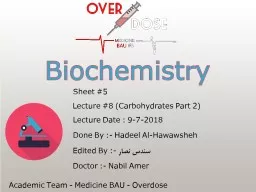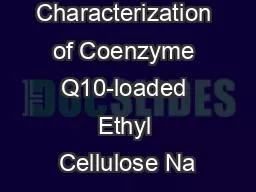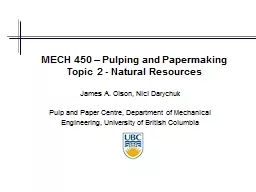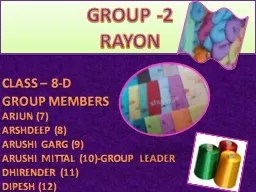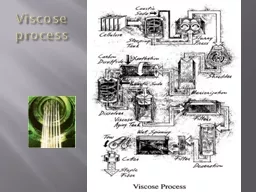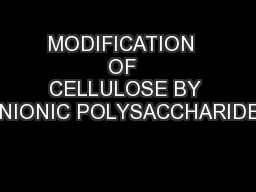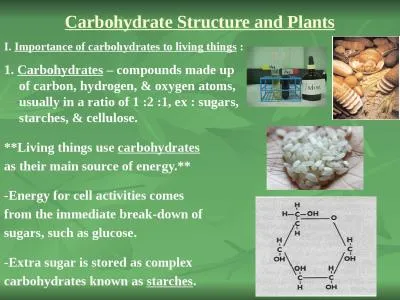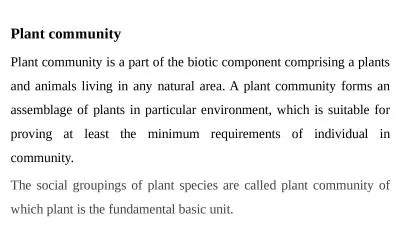PPT-Cellulose : the major structural component of plants, especially wood and plant fibers
Author : unisoftsm | Published Date : 2020-06-16
a linear polymer of approximately 2800 Dglucose units per molecule joined by b 14glycosidic bonds fully extended conformation with alternating 180 flips of glucose
Presentation Embed Code
Download Presentation
Download Presentation The PPT/PDF document "Cellulose : the major structural compon..." is the property of its rightful owner. Permission is granted to download and print the materials on this website for personal, non-commercial use only, and to display it on your personal computer provided you do not modify the materials and that you retain all copyright notices contained in the materials. By downloading content from our website, you accept the terms of this agreement.
Cellulose : the major structural component of plants, especially wood and plant fibers: Transcript
Download Rules Of Document
"Cellulose : the major structural component of plants, especially wood and plant fibers"The content belongs to its owner. You may download and print it for personal use, without modification, and keep all copyright notices. By downloading, you agree to these terms.
Related Documents

